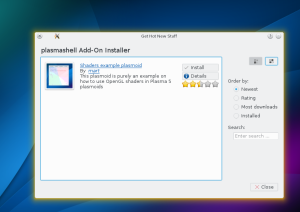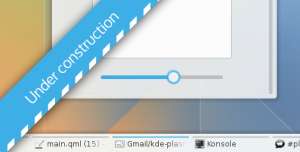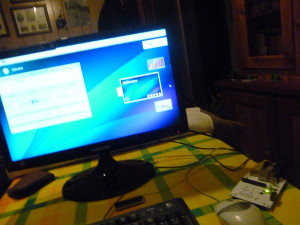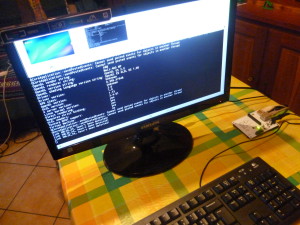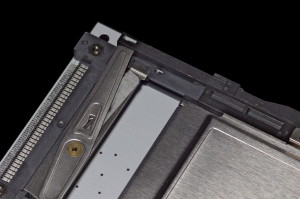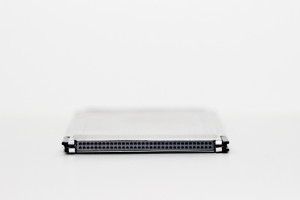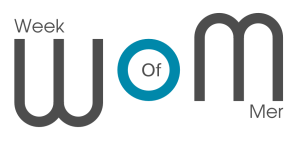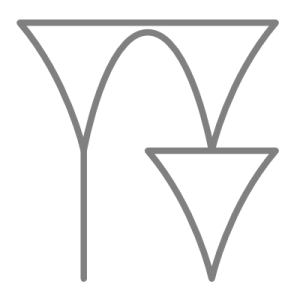We are very, very near the release of the new Plasma release by KDE (more on the nomenclature later).
This is the first entry of a short series of blogs that take a look about the past and the future of Plasma, what we learned from the 4.x series, what changed, what we can take away and to expect for the future.
First, we were (and we still are) very happy about the status of the Plasma desktop as seen in KDE 4.x, but this doesn’t stop to wonder what can be improved.
The Plasma Desktop started to migrate towards QML since quite some time, but it was clear that the real focus in Qt 5.x would have been QML2.
That’s awesome, because QML2 solves many limitation in performance that QML1 and the QGraphicsView framework had in Qt 4.x.
But that was also a problem, since Plasma1 was tightly coupled with QGraphicsView, this meant: a lot of work ahead.
What we wanted, was the plasma platform itself completely independent from any graphical system itself.
From a big monolith-that-provides-everything, libplasma would have become a way smaller library (roughly 1/3 of the code of the plasma library in 4,x), providing a *model* for the layout, and utils as painting utils and the usual data access, but the representation of this model, would have been completely up to the shell (more on that next entry).
I remember starting a branch of libplasma back in summer 2011 at the Berlin desktop summit (that was also when the Frameworks development seriously started to seriously gain steam). The thing lived as mostly a proof of concept for a while.
Fast forward at the end of 2012 and we had a minimal shell that started correctly and could correctly restore a layout of applets, in a minimal desktop (no panel yet!).
The work proceeded and the features got back one by one.
In the meantime many new people joined the effort (Some thanks to Blue Systems, some volunteer) significantly speeding up the process.
Fast forward to the beginning of 2014 and it was possible again to use it as a basic main desktop (eat your own dogfood).
Just to give a little idea of the amount of work, there are around ~5100 Plasma5-related commits only on the plasma-frameworks repository, if we count all the workspace parts, it would be a way bigger figure.
It has been a long road, with some (quite) rough moments in the middle for sure, but looking back I’m pretty proud of what we achieved, of what i did, and what every single member of the team did to get here.
But this, this is
Just the beginning
This is the first release of a new chapter of Plasma, in which a new release method will be used to celebrate the diverity of the KDE community.
We used to have a 6 months “big release” of all things KDE, called in the beginning just “KDE”, then “KDE SC”, but this release is not that anymore, because KDE grown a lot in the past years, is not just that anymore, and “a single release of everything” scales only so much.
So, let’s take a step back and see what is KDE: it is a community that can offer you a range of very different things:
- Want a primary user interface for your Desktop, Laptop, Tablet, Media Center? There is Plasma, tailored explicitly for the particular device is running on. Desktop and laptops have an interface optimized for mouse,keyboard and trackpad input, Plasma Active and Plasma Mediacenter are instead tailored on the constraints those different kind of device pose instead.
- Do you need a particular application for a particular task? The KDE community offers a wide range of applications, from media players, communication tools, games, to a kickass office suite, to one of the best painting applications on the market (not best on Linux, not best among Open Source ones, the best, period) and countless others.
They are free software, they are multi platform and supported by a vibrant community of developers. - Are you a Qt developer that is working on a new application, and need more functionality? KDE Frameworks offers a wide variety of libraries and frameworks to chose from that can dramatically decrease the amount of work needed to do a big, polished application.
- And in the latter case, if you want, of course your project is more then welcome to join in the KDE family, as other formerly external projects already did, like KDEnlive or GCompris
This release of The Plasma Desktop Workspace can be used for day to day use already, even tough it’s based on very new technology, so some youth problems are expected as well. Also, while the integration between KDE4 and Plasma5 applications is good, you may want to wait more applications ported to Frameworks 5 before jumply completely full on a pure Plasma 5 environment.
The cycle
So, when a new version will arrive? how do you check if new applications come?
The development cycle will be much faster now: you can expect a new release of the KDE frameworks (so the libraries, *not* the applications) every month, while Plasma5 will be each 3 months instead for now.
Anyways, new goodies should hit your distro of choice way faster than it used to be in the past.
Next time, I’ll write about what to expect in this release and the next ones about the user experience, the developer experience, and random musings on the future.




